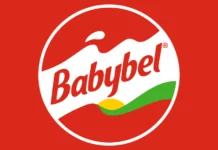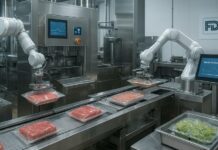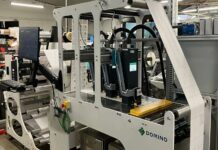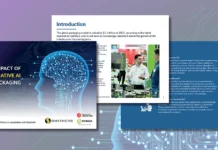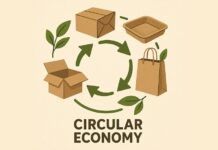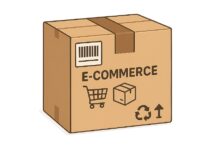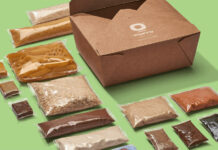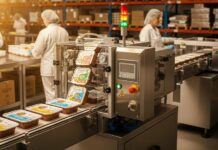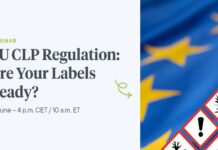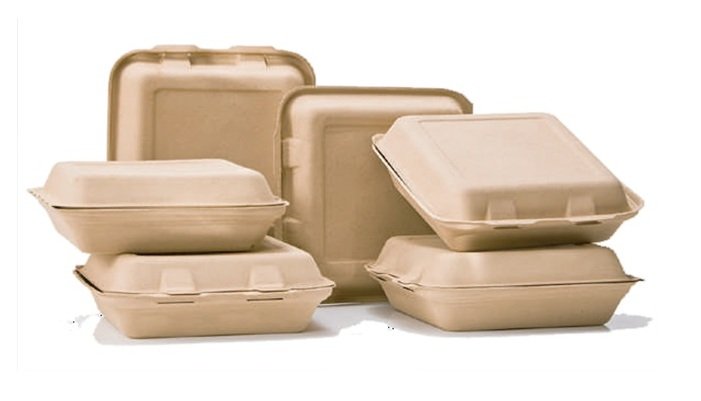The impact of plastic in food packaging has become a major environmental concern, given its extensive use and the significant harm it causes to ecosystems. According to data from the United Nations, 46% of plastic waste ends up in landfills, while 22% becomes litter, polluting landscapes, waterways, and ultimately, the food chain. This study sheds light on the prevalent use of plastic in food packaging, its environmental consequences, and the increasing momentum toward sustainable solutions.
Extensive Reliance on Plastic in Food Packaging
Plastic has become the go-to material in the food industry for packaging due to its durability, low cost, and ability to protect food items from contamination. However, this reliance comes at a cost. A recent study on plastic in food packaging examined 1,500 food and drink products across the top five food retailers in six European countries—France, Germany, Italy, Spain, Poland, and the United Kingdom—to evaluate the extent of plastic usage.
Researchers used two primary approaches to measure plastic reliance: a “basket analysis” and a “store inventory analysis.” The basket analysis revealed the percentage of plastic-packaged items in a typical shopping basket, while the store inventory analysis focused on the amount of plastic packaging used for different types of products across store sections. Results showed that processed foods, such as ready meals, meal kits, and snacks, accounted for the highest levels of plastic packaging.
Specific categories, like bread, rice, cereals, dairy products, and meat, used significant amounts of plastic packaging. The UK led the way in plastic usage, with 70% of food and drink items wrapped in plastic. Spain followed with 67%, then Italy and Germany at 66%, Poland at 62%, and France at 59%. This widespread use of plastic packaging has raised awareness of the environmental impact, prompting calls for sustainable solutions.
The Single-Use Plastic Scourge
One of the biggest concerns with plastic in food packaging is that it often falls under the category of single-use plastics—items meant to be used once and discarded. This “use-and-throw” culture, where plastic items like wrappers, straws, and containers are discarded immediately after use, has led to alarming levels of plastic waste. Much of this waste does not decompose; instead, it accumulates in landfills, pollutes water bodies, and eventually enters the ocean, harming marine life.
Single-use plastics cause severe damage to wildlife. Marine animals often ingest small pieces of plastic, mistaking them for food, which can lead to fatal consequences. For instance, sea turtles mistake plastic bags for jellyfish, while birds and marine animals suffer from plastic entanglements. This pollution extends to humans as well. Over time, plastics break down into microplastics, which find their way into the water supply and the food chain, eventually entering our bodies and potentially affecting human health.
Consumer and Industry Attitudes Towards Plastic Reduction
Awareness about the environmental impact of plastic in food packaging has grown among both consumers and industry professionals. A recent survey of 300 food and drink industry professionals found that 98% of companies are committed to reducing plastic usage in packaging. However, achieving these goals is not without challenges. The rising cost of sustainable raw materials and the perception that consumers may resist higher prices for sustainable packaging options are two significant concerns for industry leaders. Moreover, about 72% of respondents believed consumers would be unwilling to pay a premium for eco-friendly packaging, and 65% felt that convenience often outweighs environmental considerations for consumers.
Despite these concerns, studies suggest that younger generations, particularly Gen Z and Millennials, prioritize environmental impact when choosing brands. A report from the Harvard Business Review found that younger consumers are 27% more likely to choose brands that demonstrate a commitment to environmental sustainability. With these generations expected to surpass Baby Boomers in purchasing power by 2030, their preferences for sustainable options could drive substantial market shifts and encourage companies to adopt sustainable practices.
Innovations and Commitments in Sustainable Food Packaging
The challenges of reducing plastic in food packaging have led to innovative approaches, with companies exploring alternatives like biodegradable materials, recyclable packaging, and reusable containers. Many brands are now researching and testing eco-friendly materials that can reduce the environmental impact of food packaging while maintaining product safety and shelf life.
Some of these innovations include the use of recycled paper, compostable packaging, and even plant-based materials designed to break down naturally. However, these solutions are often more expensive, and their development requires a significant commitment from the industry to create scalable and cost-effective packaging alternatives.
Regulatory Push for a Plastic-Free Future
As the call for reducing plastic in food packaging grows louder, several governments worldwide are introducing policies to curb plastic usage and encourage sustainable practices. In the European Union, countries like France have implemented regulations aimed at reducing plastic use, with plans to phase out disposable plastics by 2040. The UK introduced the Plastic Packaging Tax, which encourages companies to use recycled materials in their packaging and imposes fees on those that do not meet minimum recycled content requirements.
These regulatory efforts aim to hold companies accountable and promote innovation in sustainable packaging materials and waste reduction strategies. By setting clear reduction goals, governments hope to stimulate a market for recyclable and biodegradable materials, providing businesses with financial incentives to invest in eco-friendly packaging.
In addition to regional regulations, there is a push for a global plastics treaty, which would establish consistent standards and guidelines for plastic use and recycling worldwide. Such a treaty would harmonize regulations across countries, making it easier for multinational companies to comply with sustainability goals and reduce their overall plastic footprint.
Moving Towards a Sustainable Grocery Sector
Reducing plastic in food packaging is a complex issue that requires balancing convenience, cost, and environmental impact. As consumers become more aware of plastic’s environmental damage, pressure is mounting on both governments and the food industry to develop sustainable solutions. With companies facing both regulatory and consumer demands, the race to innovate and adopt environmentally friendly packaging solutions is intensifying.
Furthermore, as eco-conscious consumer preferences grow, the industry may see a shift toward a more sustainable grocery sector. Retailers and food producers may increasingly adopt plastic alternatives and set higher standards for packaging materials, paving the way for a future where sustainable options become the norm rather than the exception.
The Path Forward for Plastic in Food Packaging
The issue of plastic in food packaging is one of the most pressing environmental challenges of our time. As food packaging is a significant contributor to global plastic waste, addressing this issue requires a concerted effort from businesses, governments, and consumers. Industry professionals must embrace innovative packaging solutions and make bold commitments to reduce plastic use, while governments must continue to implement policies that support sustainable practices and hold companies accountable.
Consumer awareness and demand for sustainable products will also play a pivotal role in shaping the future of food packaging. As more people seek eco-friendly options, companies that prioritize sustainability will likely see increased support from environmentally conscious consumers, especially among younger generations.
The path forward for plastic in food packaging will require a collaborative approach that combines regulation, innovation, and consumer advocacy. By working together, stakeholders can reduce plastic waste, protect ecosystems, and move toward a more sustainable food system that respects both environmental health and consumer needs.





